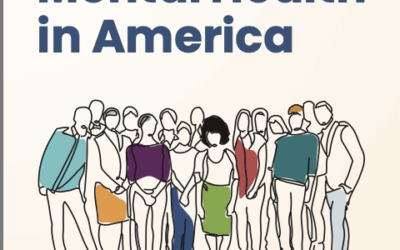Suicides are a public health issue, and suicide is preventable.
Mental Health America of Virginia recently completed a Suicide Prevention Needs Assessment for “Be Well VA,” the central Virginia (Region IV) public mental health prevention specialists. The region includes 7 Community Services Boards (CSB) and the 24 localities within them.
For the past 10 years, suicides have been steadily increasing, but in 2019 they began to slightly decrease nationally and in Virginia. However, rates vary among subgroups of people. Other trends, such as youth mental health indicators and self-harm data, reveal alarming increases in the number of Virginia youth at risk.
MHAV conducted two surveys, several focus groups, and collected data to create a picture of suicides and suicide prevention efforts for the region.
A few excerpts from the MHAV report are presented below. An executive summary and the full report are available on the MHAV website.
Suicides have both increased and decreased when comparing suicide rates per population of 100,000 from a National, Virginia, and Region IV perspective. Nationally, suicides slightly decreased in 2019-2020. In Virginia, from 2010-2018, deaths by suicide increased 25%. There was a slight decrease in 2019-2020. Region IV has been consistently above both the National and Virginia age-adjusted suicide rates every year except 2017-2018. Rates of each CSB within Region IV also differ from one another.
In Region IV, the suicide rates in some Community Services Board service areas were less than the Virginia suicide rate while others exceeded it. Although rates of suicide have gone down in Virginia, counts of suicides in Region IV have risen slightly since 2018.

In 2020, Firearms were used in over 58% (1,082) of suicides in Region IV compared to 52% (24,292) nationally. Firearms continue to be the most used mechanism of death followed by suffocation and poisoning. Males tend to use firearms at a rate 4x more than females.
In Region IV between 2011-2020, 77% of suicides were male and 23% were female.
White people make up over 69.68% of suicides nationally (AFSP, 2020). In Region IV, 80% of suicides between 2011-2020 were White. The suicides in each locality generally reflect the racial makeup of each locality, which varies throughout the region.
According to the CDC, people ages 85 and older have the highest rates of suicide. In the last 9 years, 1,878 people have died by suicide in Region IV. 38% (719) of deaths by suicide were middle-aged adults between 45-64 years of age. 31% (579) of deaths were young and middle-aged adults between 24-44 years old.
Hospitalizations for self-harm have risen dramatically in the last few years. Where there was a decrease in the suicide rate for Virginia and Region IV in 2018-2020, there was an increase in non-fatal self-harm hospitalizations.
Conclusions:
The highest suicide rates continue to be among adult white males, while most recent increases are among females and the Black population. Prevention efforts do not always differentiate between these groups, either in material content or messaging strategy.
Both public and private service providers in the region offer prevention related services, but it is not clear that services are always based on evidence of effectiveness for the specific population being served. Neither is it clear that the public and private, youth, campus and adult providers are coordinating services and messaging to maximize each provider’s relative strengths.
Firearms continue to be the most used mechanism of death, followed by suffocation and poisoning, with males using firearms at four times the rate of females. Recent adaptation and expansion of the Lock & Talk training could possibly impact suicide numbers for men.
The top barriers reported to accessing mental health services were financial resources, time and stigma. A few myths about suicide may contribute to cultural barriers and stigma. Even among highly educated survey respondents, only 53% agreed that asking about suicide would not lead to thoughts of suicide (Fact: Asking about it does not lead to suicide).
Individual subject matter experts have opinions about the perceived effectiveness of trainings, population groups in need of priority engagement, and the barriers to accessing services. For example, they see a priority need for reaching youth of all ages, seniors, first responders, the faith, BIPOC and LGBTQ communities.
Despite the recent decline in the overall suicide rate, the significant increase in warning signs among youth is of great concern. When examining the broader context of risk for suicide, several sources show increases in youth at risk. Particularly for young females, the warning signs are clear. Virginia and Region IV self-harm hospitalization numbers, Virginia Youth Survey results, and the Mental Health America suicide screening data suggest the need for a priority focus on youth to prevent despair and deaths by suicide.
*For more information, data charts and recommendations, please see the Suicide Prevention Needs Assessment – Executive Summary or the full report on our website www.mhav.org, or download from the links below.



